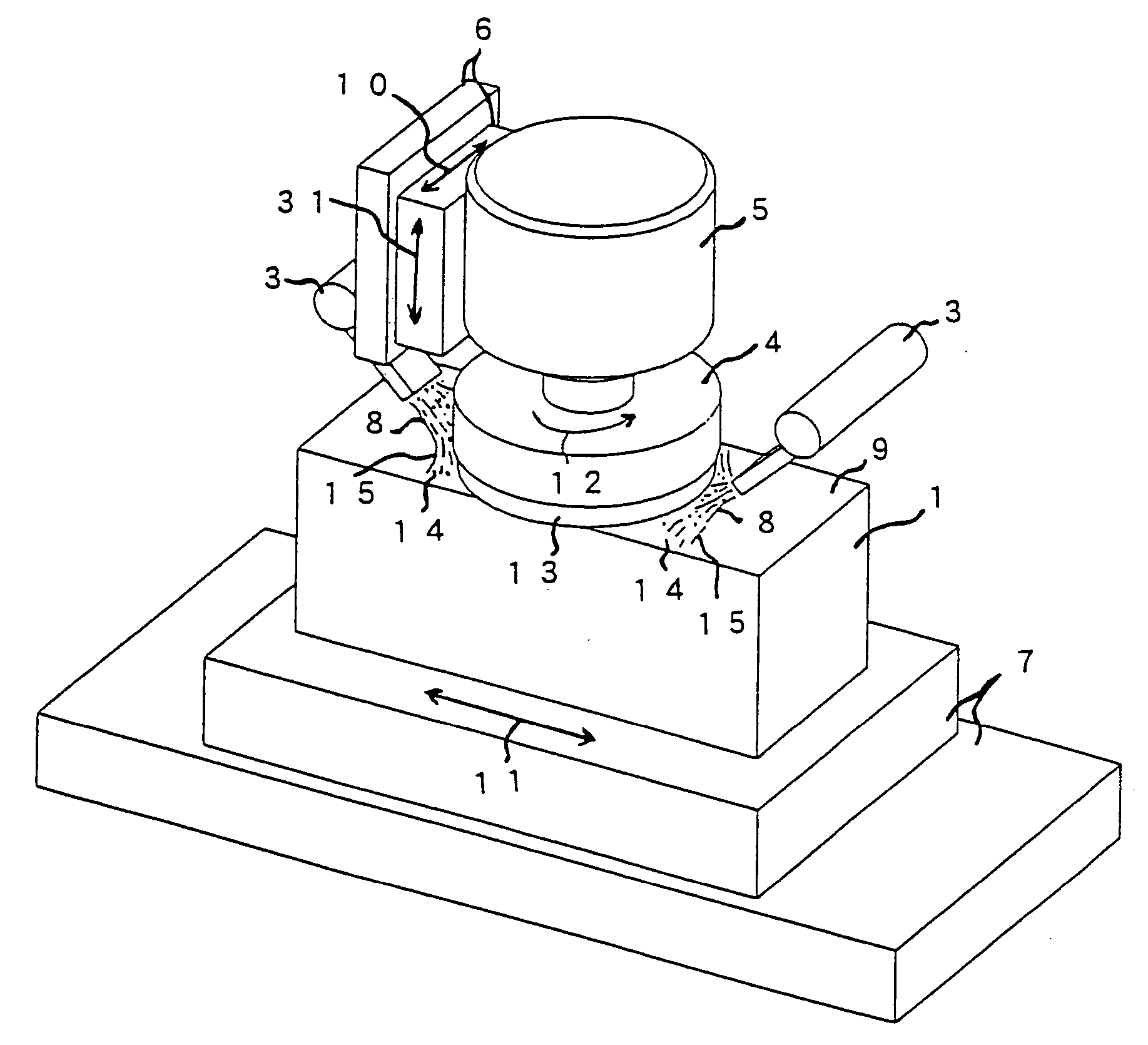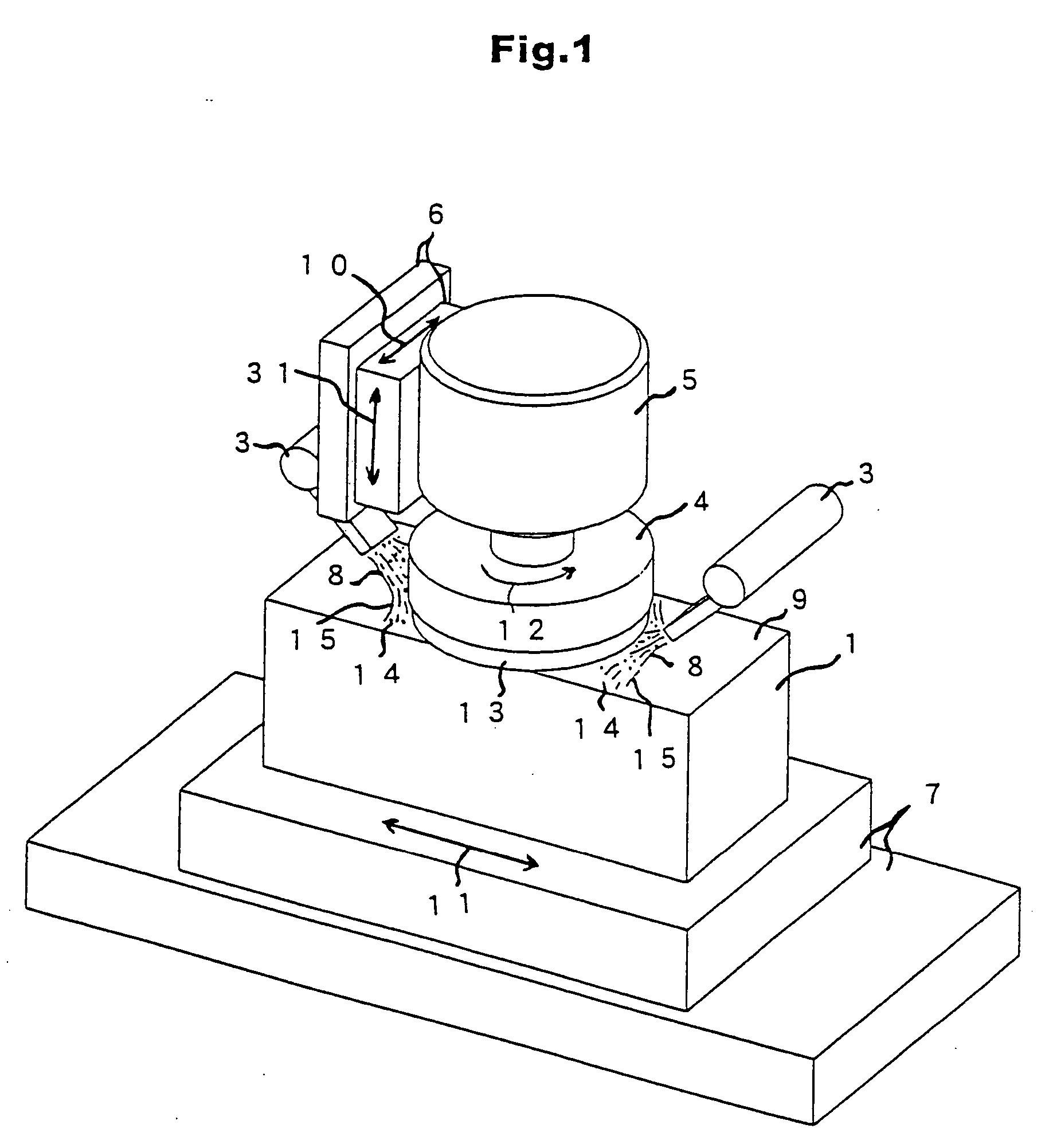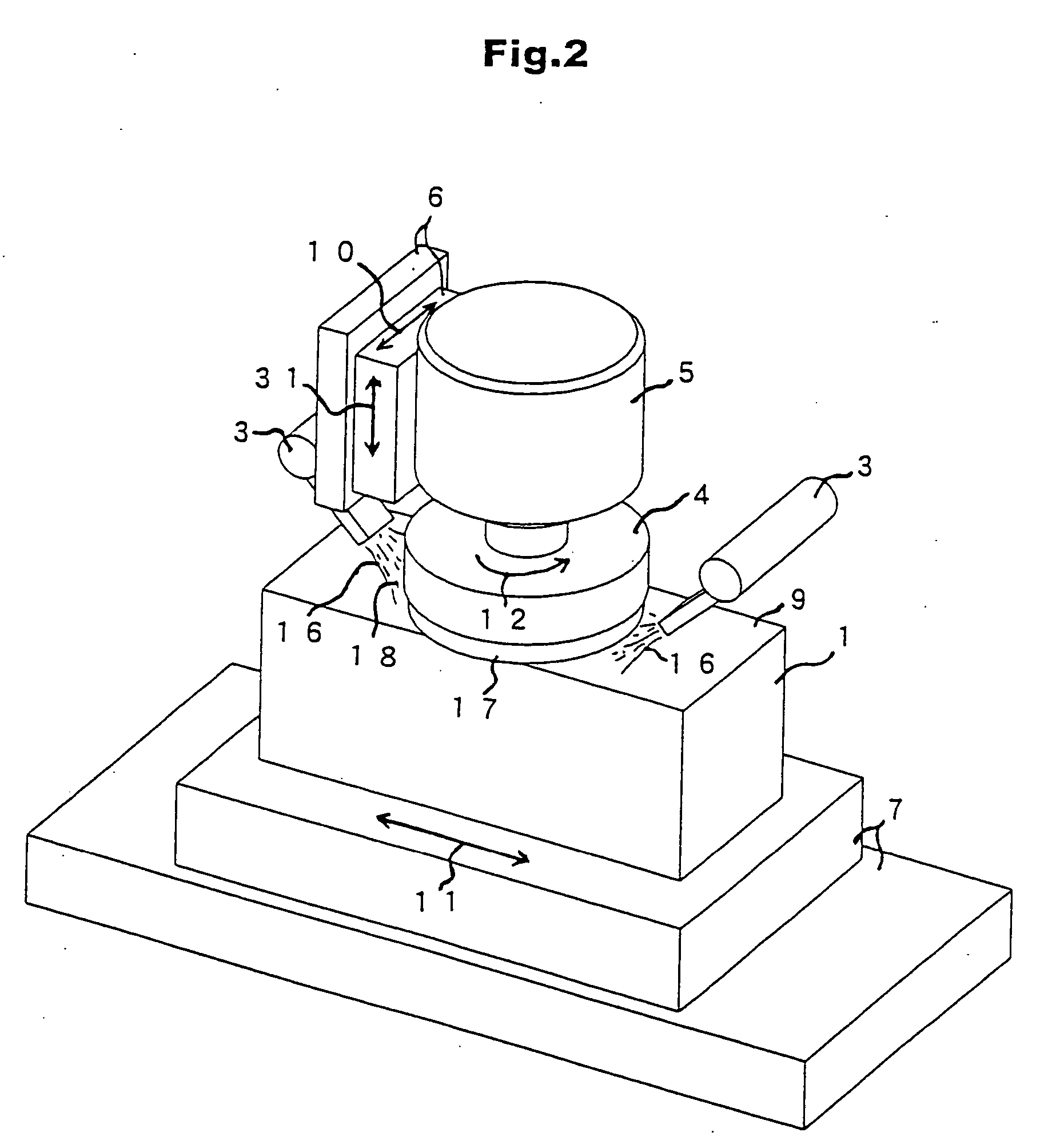Method of making solar cell
a manufacturing method and solar cell technology, applied in the field of manufacturing a solar cell, can solve the problems of affecting the supply of silicon wafers, consuming a lot of time for described periphery processing with respect to each of the silicon wafers, and affecting the quality of the solar cell, so as to achieve the effect of surface roughness of the side faces
- Summary
- Abstract
- Description
- Claims
- Application Information
AI Technical Summary
Benefits of technology
Problems solved by technology
Method used
Image
Examples
example 1
[0045] As shown in FIG. 4, a silicon block 1 was cut from a silicon ingot using a band saw 20. FIG. 4 shows a side face 19 of the silicon block and an edge 21 of the silicon block.
[0046] Four side faces 19 of the silicon block 1 were flattened by the method of the present invention to reduce defective wafers cracked in a later step and thus improve yield of the silicon wafer.
example 2
Method 1
[0047] The silicon block 1 of 125×125×250 mm obtained in Example 1 was polished by Method 1 to confirm the effect of the invention. A sponge wheel and a mixture of GC abrasive grains (#800) with polish oil were used as the polishing member 13 and the slurry 8, respectively.
[0048] As a result, four side faces 9 were polished in 16 minutes. Surface roughness Ry of the side faces was reduced from 20 μm to 5.8 μm by the polishing.
example 3
Method 1, Using Resin Brush
[0049] The silicon block 1 of 125×125×250 mm obtained in Example 1 was polished by Method 1 to confirm the effect of the invention. As the polishing member 13, a wheel (240 mm in diameter) provided with nylon resin hairs (0.5 mm in diameter, 20 mm in length) densely fixed with an epoxy adhesive on a bottom region of 160-240 mm diameter was used. As the slurry 8, a mixture of GC abrasive grains (#800) and polish oil (weight ratio 1:1.28) was used.
[0050] The polishing member 13 was pressed on the surface of the silicon block 1 to such a degree that the distal ends of the nylon resin hairs reach 1.5 mm below a position where the distal ends contact the surface of the silicon block 1. Then, the polishing member was rotated at 1800 rpm.
[0051] After the polishing member 13 contacted the surface of the silicon block 1, the silicon block 1 was moved along a lengthwise direction of the silicon block, which is orthogonal to a rotation axis of the polishing member...
PUM
| Property | Measurement | Unit |
|---|---|---|
| Surface roughness | aaaaa | aaaaa |
| Surface roughness | aaaaa | aaaaa |
Abstract
Description
Claims
Application Information
 Login to View More
Login to View More - R&D
- Intellectual Property
- Life Sciences
- Materials
- Tech Scout
- Unparalleled Data Quality
- Higher Quality Content
- 60% Fewer Hallucinations
Browse by: Latest US Patents, China's latest patents, Technical Efficacy Thesaurus, Application Domain, Technology Topic, Popular Technical Reports.
© 2025 PatSnap. All rights reserved.Legal|Privacy policy|Modern Slavery Act Transparency Statement|Sitemap|About US| Contact US: help@patsnap.com



